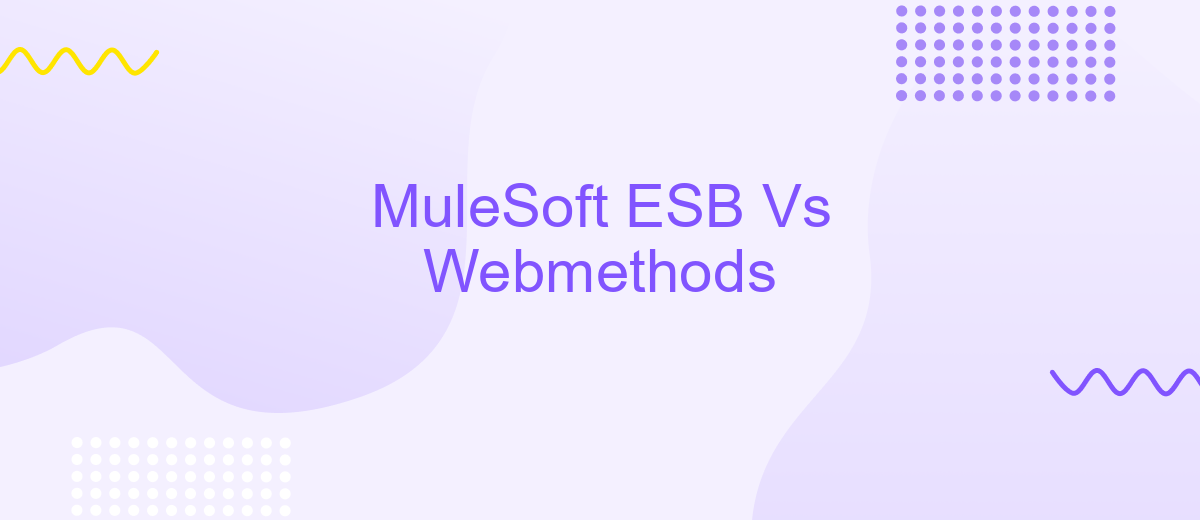MuleSoft ESB Vs Webmethods
When evaluating enterprise integration solutions, two prominent contenders often come into play: MuleSoft ESB and Software AG's webMethods. Both platforms offer robust capabilities for connecting disparate systems and streamlining business processes. This article delves into a comparative analysis of MuleSoft ESB and webMethods, examining their features, strengths, and potential limitations to help organizations make an informed decision.
Introduction
MuleSoft ESB and WebMethods are two prominent tools in the integration landscape, each offering unique features and capabilities for connecting applications and data across various systems. Choosing between them can be challenging, as both have their strengths and weaknesses. This article aims to provide a comparative analysis to help you make an informed decision.
- Flexibility: MuleSoft offers a high degree of flexibility with its Anypoint Platform, while WebMethods provides robust integration capabilities through its comprehensive suite of tools.
- Scalability: Both platforms support scalable solutions, but MuleSoft's cloud-native architecture gives it an edge in modern cloud environments.
- Ease of Use: WebMethods is known for its user-friendly interface, whereas MuleSoft requires a steeper learning curve but offers extensive customization options.
When considering integration services, tools like ApiX-Drive can further simplify the process by offering no-code solutions for connecting various applications and automating workflows. Understanding the nuances of MuleSoft ESB and WebMethods, along with leveraging additional services like ApiX-Drive, can significantly enhance your integration strategy.
Features

MuleSoft ESB and Webmethods both offer robust features for enterprise integration, but they have distinct advantages. MuleSoft ESB provides a lightweight and flexible architecture, which allows for seamless integration with various applications and services. It supports a wide range of protocols and standards, making it highly adaptable to different environments. Additionally, MuleSoft offers a user-friendly interface and comprehensive documentation, which simplifies the integration process and reduces the learning curve for developers.
On the other hand, Webmethods excels in providing a comprehensive suite of tools for business process management and integration. It offers advanced capabilities for monitoring, analytics, and governance, ensuring that integrations are not only efficient but also secure and compliant. Webmethods also integrates well with ApiX-Drive, a service that automates data transfer between various applications, further enhancing its integration capabilities. Overall, both platforms are powerful, but the choice between MuleSoft and Webmethods will depend on specific business needs and existing infrastructure.
Comparison

MuleSoft ESB and Webmethods are two prominent integration platforms, each offering unique features and capabilities. MuleSoft ESB is known for its flexibility and ease of use, allowing businesses to connect applications, data, and devices with minimal coding. Webmethods, on the other hand, is recognized for its robust enterprise-level integration and comprehensive set of tools for managing complex IT environments.
- Flexibility: MuleSoft ESB provides a more flexible and developer-friendly environment, whereas Webmethods offers a more structured approach suitable for large enterprises.
- Ease of Use: MuleSoft's intuitive interface and drag-and-drop functionality make it easier for non-developers to create integrations, while Webmethods requires more technical expertise.
- Integration Capabilities: Both platforms support a wide range of integration scenarios, but MuleSoft's Anypoint Platform offers a broader set of connectors and templates, facilitating faster integrations.
- Scalability: Webmethods is often preferred for its scalability and ability to handle high-volume transactions, making it ideal for large-scale enterprises.
While both MuleSoft ESB and Webmethods have their strengths, the choice between them depends on the specific needs of the organization. For businesses looking for a user-friendly solution with extensive integration options, MuleSoft ESB is a strong contender. For those requiring robust, enterprise-grade solutions, Webmethods is a solid choice. Additionally, services like ApiX-Drive can further streamline the integration process, offering automated and efficient solutions for connecting various systems.
Use Cases

When evaluating MuleSoft ESB and Webmethods for integration solutions, it's essential to consider the specific use cases each platform excels in. Both tools are designed to streamline and facilitate complex integrations, but they cater to different needs.
MuleSoft ESB is particularly well-suited for cloud-based applications and services. Its API-led connectivity approach allows businesses to integrate various systems seamlessly, making it ideal for organizations looking to modernize their IT infrastructure. On the other hand, Webmethods offers robust support for on-premises and hybrid environments, making it a preferred choice for enterprises with legacy systems.
- MuleSoft ESB: Best for cloud-native applications, real-time data integration, and API management.
- Webmethods: Ideal for on-premises, hybrid integrations, and complex B2B transactions.
- ApiX-Drive: Excellent for automating routine tasks and integrating web applications without coding.
Choosing between MuleSoft ESB and Webmethods ultimately depends on your organization’s specific requirements and existing infrastructure. Both platforms offer unique strengths, and tools like ApiX-Drive can further enhance their capabilities by providing seamless, code-free integration solutions.
Conclusion
In conclusion, both MuleSoft ESB and Webmethods offer robust solutions for enterprise integration, each with its own strengths and unique features. MuleSoft ESB stands out for its flexibility, extensive API management capabilities, and strong community support, making it an excellent choice for organizations looking to leverage modern, cloud-based architectures. On the other hand, Webmethods excels in providing comprehensive integration solutions with deep-rooted capabilities in B2B integration, making it suitable for enterprises with complex legacy systems and diverse integration needs.
Choosing between MuleSoft ESB and Webmethods ultimately depends on your organization's specific requirements and existing infrastructure. For those seeking an efficient way to streamline integration processes, services like ApiX-Drive can further enhance the integration experience by automating and simplifying data transfers between different systems. By carefully evaluating the strengths and limitations of each platform, businesses can make an informed decision that aligns with their strategic goals and operational needs.
FAQ
What are the main differences between MuleSoft ESB and Webmethods?
Which one is better for cloud integration?
How do their licensing models compare?
What kind of support and community resources are available for each?
Are there any tools to simplify the integration process with these platforms?
Do you want to achieve your goals in business, career and life faster and better? Do it with ApiX-Drive – a tool that will remove a significant part of the routine from workflows and free up additional time to achieve your goals. Test the capabilities of Apix-Drive for free – see for yourself the effectiveness of the tool.

